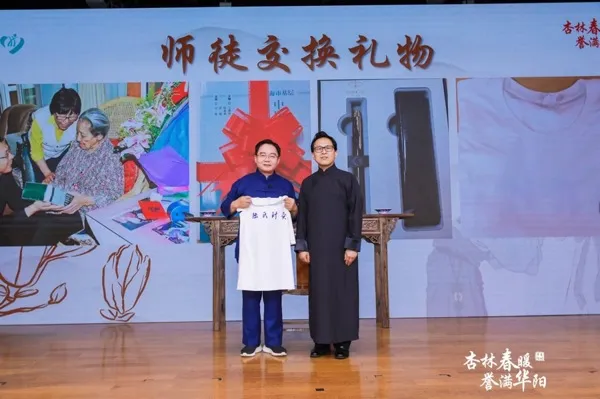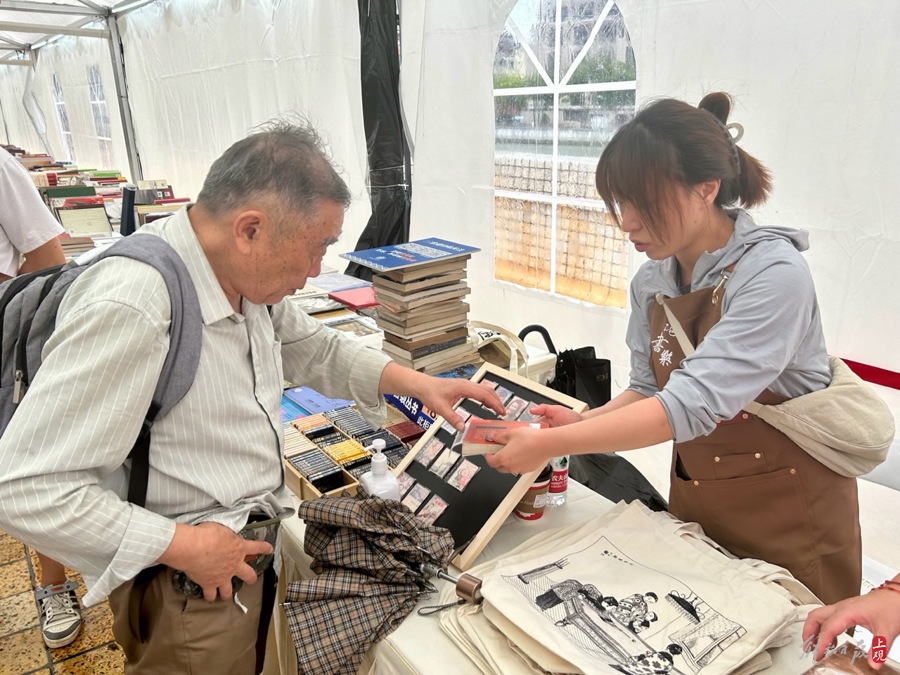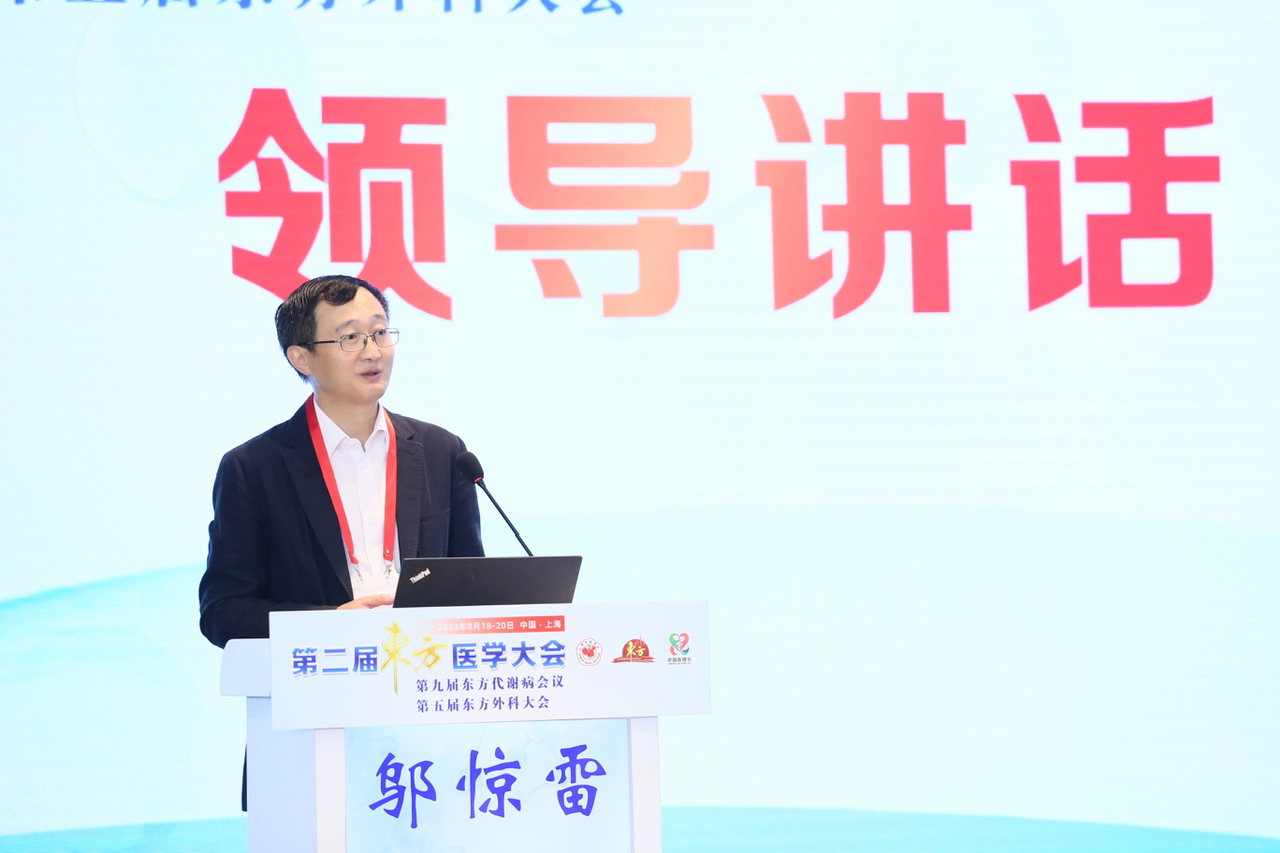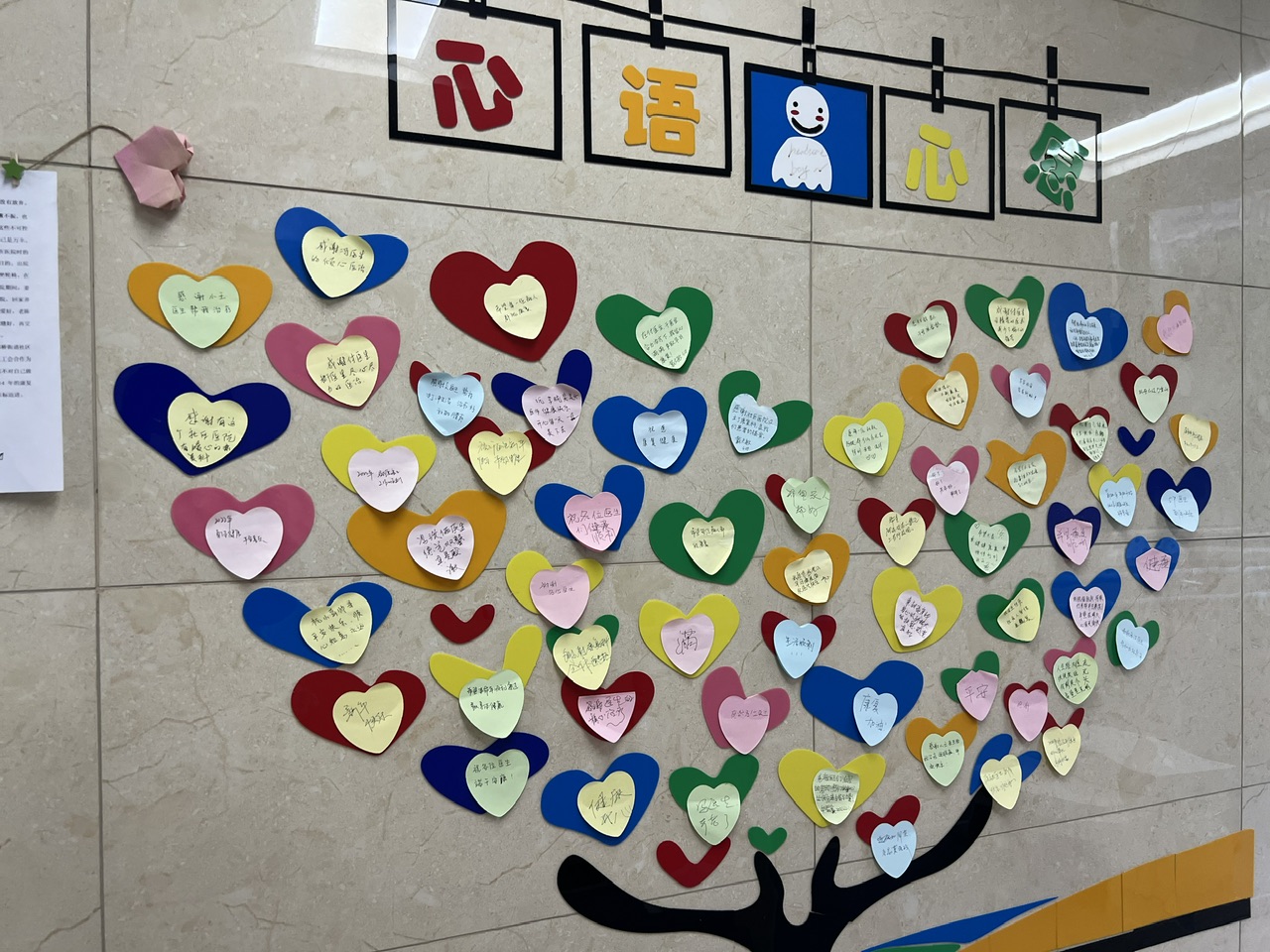Can Shanghai become the "next stop" for global international medical tourism?
Going to Shanghai, China for medical treatment and enjoying world-class medical technology services is becoming the choice of more and more foreigners.
A few months ago, a four-year-old Uzbek girl named Marian came to Shanghai for medical treatment. She eventually underwent two successful craniotomies at the Children's Hospital of Fudan University. Her ischemic moyamoya disease improved, and her family took her home after being discharged from the hospital. This year alone, Fudan's Pediatrics Department has treated two Russian children and one Georgian child.
The Fudan Pediatric Neurosurgery team took a photo with Marian’s parents.
As the medical center of Asia, Shanghai has the most abundant medical resources in the country, with numerous tertiary hospitals, and its technical level and services are world-class. How can Shanghai's "medical brand" gain a place in the fiercely competitive international medical service market? Just last week, 13 public medical institutions were awarded the title of "Public Hospital International Medical Tourism Pilot Units" in Shanghai, officially launching Shanghai's international medical brand.
International healthcare has become one of the fastest growing industries in the world
A 53-year-old Chinese-Swedish woman is experiencing a new life in Shanghai. Two years ago, she developed dysphagia and numbness on her face, but the local authorities could not find the cause until she returned to China at the end of last year. With the cooperation of the neurology team of Huashan Hospital affiliated to Fudan University and the team of the International Medical Center, she was diagnosed with autoimmune encephalitis. After high-dose hormone shock, plasma exchange and other treatments, the patient's condition has stabilized. Huashan Hospital has also solved the insurance payment problem through active communication. Subsequent patients insisted on staying in Shanghai for treatment. The lady said bluntly: "After experiencing it myself, I believe in Shanghai's medical technology and services!"
Kayla, a 1-year-8-month-old baby girl from Malacca, Malaysia, has been suffering from jaundice since birth. Even after undergoing surgery locally, she still had repeated symptoms such as fever and jaundice, and her belly was getting bigger and bigger. Only a liver transplant could save her life. From Malaysia to Shanghai, Kayla traveled nearly 3,700 kilometers to receive part of her mother's liver at the liver surgery department of Renji Hospital affiliated to Shanghai Jiaotong University School of Medicine. One liver was used by two people, and Kayla finally got a new life in Shanghai.
Similar cross-border cases are increasing in Shanghai. As people's living standards improve, the demand for health and wellness increases, and with convenient transportation and other factors, international medical tourism has become one of the fastest growing industries in the world.
A set of data revealed that the global medical tourism market output value has soared from less than US$10 billion in 2000 to US$679 billion in 2017, with an average annual growth rate of 20%. The China Tourism Academy predicts that my country's medical tourism market will reach 300 billion yuan by 2025.
Developing international medical services is an important measure for Shanghai to build an international medical center city, and it is also a manifestation of actively promoting high-level reform and opening up and creating a first-class business environment. In fact, Shanghai has been exploring this field for a long time.
As early as the 1980s, Shanghai was the first in the country to provide foreign-related medical services. In 2017, Shanghai New Hongqiao International Medical Center was selected as a national health tourism demonstration base. In 2019, the "Healthy Shanghai Action" formally proposed to develop medical tourism and build a competitive international health tourism destination. In August 2020, Shanghai took the lead in selecting the first batch of international medical tourism pilot and seed cultivation institutions from non-public medical institutions. Until September 2024, Shanghai has awarded 13 public medical institutions with strong innovation awareness, high technical level, significant disciplinary advantages, and international medical foundations as "International Medical Tourism Pilot Units".
With 30 years of experience, what exactly is international medical care?
As one of the earliest hospitals in my country to carry out international medical treatment, Professor Gu Jingwen, Director of the International Medical Center of Huashan Hospital Affiliated to Fudan University, used his experience to tell "Breaking the Ice" to formulate the first international medical standard in China.
International medical care has already established a considerable scale in some mature countries.
Industry insiders revealed that India, Thailand, South Korea, Singapore, Malaysia and other Asian countries launched a series of policies, regulations and strategic plans for the development of medical tourism as early as the beginning of this century. Take Singapore as an example. In 2003, it began to regard medical tourism as the leading industry of its service industry, and made health examinations, cutting-edge surgical treatments, women's health and cosmetic surgery as its main service items. In 2004, it made a plan to attract 1 million patients to Singapore for medical tourism every year by 2012.
In 2015, India proposed that the annual output value of medical tourism in the next six years should reach 17 billion US dollars, surpassing Thailand in one fell swoop and becoming the new leader of the medical tourism industry. South Korea, which started medical tourism relatively late, has also been unwilling to be outdone. Since the establishment of the "Korea International Medical Services Association" in March 2007, the South Korean government has been committed to amending the law and promoting the development of "medical tourism special zones". The amendment allows medical institutions to legally recruit foreign medical tourists. Its rapid development is expected to become a new tourism medical center in Asia. Between 2018 and 2022, there were 1.37 million foreign patients in South Korea, including about 190,000 plastic surgery patients.
Compared with the booming development of other countries, the development of my country's international medical tourism market is in its infancy. There is no unified conclusion on how to regulate and develop it. To promote the healthy development of the industry, it is the first step to clearly require the formulation of standards. In June this year, the Shanghai local standard "International Medical Service Standard" was officially released after several years of preparation, and will be officially implemented next month. This is also the first exploration of my country's formulation of standards and specifications in the field of international medicine.
A relevant person in charge of the Shanghai Municipal Health Commission introduced: This local standard has clear and detailed requirements for international medical service institutions, personnel, medical quality, service management, payment models, etc., filling the gap in this field in China.
The reporter looked through the published service standards and found that Shanghai International Medical Care has a clear definition, namely, a medical service format characterized by high-level services and high-level technologies, with cross-border medical treatment as the main service target, and commercial health insurance and overseas medical insurance or self-payment by cross-border medical treatment as the main payment method.
Shanghai local standard "International Medical Service Specifications".
The local standard also "equips" Shanghai International Medical Services with a standardized special logo, which includes Shanghai and medical elements. The central pattern is a blooming magnolia, and the external "shield logo" represents medical care. The combination of graphics, letters and colors conveys the concept of Shanghai International Medical to protect health.
For institutions that carry out international medical services, local standards have clear requirements for venue space, facilities and equipment, medicines and medical devices, information systems, etc. For example, the "information system" should establish information systems such as appointment, consultation, examination, treatment, follow-up, health management, payment settlement, and file management that match international medical services. For another example, regarding the payment of fees, it is clear that: it should facilitate the settlement and payment of international medical service fees, establish a stable cooperative relationship with commercial health insurance institutions, establish information connectivity, and carry out online claims.
With the standard guidance, Shanghai's international medical services have "rules to follow". Taking Zhongshan Hospital affiliated to Fudan University as an example, the hospital's international medical tourism pilot project was launched in September last year, focusing on building two international medical tourism service platforms, the International Medical Department and Sheshan Campus, forming a "one body and two wings" development pattern.
Gu Jianying, Party Secretary of Zhongshan Hospital, introduced: At present, the hospital has built an international medical department with high standards. More than 300 experts are practicing in the international medical department, and basic medical services are provided by the first-ranked general medicine department in the country. The medical and operation teams have good foreign language communication skills, and also use artificial intelligence to provide special equipment for minority language services. The International Medical Department has introduced the international certification training system - DNV, and established a continuous improvement mechanism to ensure that the service quality is always benchmarked against the international advanced level. At the same time, a direct payment mechanism has been established with 30 commercial insurance companies to provide 24-hour emergency assistance services for commercially insured patients.
How to "stay on par with the cutting edge" and keep pace with international pharmaceutical and medical device applications
Since 2023, Shanghai's international medical tourism has entered the "fast lane" of development, and the opportunity is right at the right time, right at the right place, and right at the right people. A relevant person in charge of the Shanghai Municipal Health Commission said that the fact that people from abroad come to Shanghai for medical treatment is undoubtedly an objective indicator of Shanghai's status as an "international medical center city." With the continuous optimization of national policies such as visa-free entry, visa-free transit, and port visas, Shanghai received more than 3 million inbound tourists in the first half of this year, an increase of more than 140% year-on-year, leading the country, which brings important opportunities for the development of international medical care.
Martha, a British friend, recently sent a "video thank you letter" in which she expressed her admiration for the efficient and collaborative spirit of the medical team at Zhongshan Hospital in Shanghai, China. Martha came to China not long ago to visit her friend and experience the local customs and culture of Shanghai. Her friend suggested that she should experience a comprehensive medical examination in Shanghai. Martha accepted the advice without hesitation. Unexpectedly, the physical examination showed important diagnostic indicators suggesting that she had a tumor. "I am very impressed by the multidisciplinary collaboration here. The experts in oncology, radiology and other departments communicated efficiently and developed a detailed treatment method for me as quickly as possible."
After returning home, Martha sent a special "video thank you letter".
After returning home, Martha shared the "Shanghai version" treatment plan with her family doctor and friends in the medical field in the UK, and received unanimous responses: "The quality of medical care in Shanghai is really reassuring. This is the most suitable plan for you." Now, Martha has safely passed the first stage of treatment and is about to embark on another journey of fighting cancer.
In the future, can Shanghai become a paradise for more patients to be reborn? This depends on better services and more cutting-edge technologies.
The Shanghai local regulations on international medical services clearly state that the use of drugs and medical devices in international medical institutions or international medical campuses should be in line with international standards, and related explorations have been implemented in Shanghai medical institutions.
Ruijin Hainan Hospital affiliated to Shanghai Jiaotong University School of Medicine, relying on the advantages of the two "national nine articles", has achieved the simultaneous use of licensed new drugs and new devices in the world. Hu Weiguo, deputy director of Ruijin Hospital, brought a set of data showing that as of the end of August, Ruijin Hainan Hospital had landed 118 new drugs and new devices, including 76 national firsts. These new drug and new device projects have all been opened to patients in the International Medical Department, ensuring that international patients can use the world's latest drugs and devices simultaneously in China.
At present, the International Department of Ruijin Hospital actively introduces and applies new drugs and new medical devices to provide patients with cutting-edge treatment plans. In particular, it has made significant progress in the treatment of tumors and blood system diseases, heart and metabolic diseases, neuroscience, anti-aging and other diseases, and has served more than 400 patients in total. The introduction of these new drugs and new medical devices has significantly improved the treatment effect and the quality of life of patients.
To condense the medical brand of Shanghai and even China, Renji Hospital is actively preparing to establish the first overseas representative office of a public hospital in Shanghai. Xia Qiang, an academician of the Chinese Academy of Engineering and president of Renji Hospital affiliated to Shanghai Jiaotong University School of Medicine, introduced that the representative office will radiate Shanghai's internationally-level medical technology to the "Belt and Road" region with liver surgery, reproductive medicine, gastroenterology, rheumatology, urology and other specialty disciplines as pilot projects. So far, more than 40 Malaysian children have flown to Shanghai for successful pediatric liver transplantation. As the quality control center for human assisted reproductive technology in Shanghai, the Reproductive Medicine Center of Renji Hospital provides safe and high-quality assisted reproductive medical services to nearly 200 foreign couples from more than 30 countries every year.
In addition to medical technology services, we also need to "work hard"
International medical tourism still has a long way to go from its infancy to mature development. Jin Chunlin, director of the Shanghai Health and Health Development Research Center, mentioned in an interview: As a representative of traditional medicine, Chinese medicine has always been very popular in the international medical tourism market. For example, massage and health care products in Thailand and Japan are very popular among tourists, and they all come from the concept of Chinese medicine.
In addition, unlike conventional medical care, international medical care requires public hospitals to consider issues such as how to actively explore the integration of medical care and insurance, improve the level of commercial insurance services, launch special insurance products to attract consumers, expand promotion and marketing, and achieve the integration of medical care and tourism, etc., in the process of carrying out international medical care.
Exploration and practice are underway. "We have established TCM centers with Malta, Thailand, Singapore, Morocco, the United Kingdom and other countries, and have successfully brought TCM culture to all parts of the world," said Chen Yuelai, president of Longhua Hospital affiliated to Shanghai University of Traditional Chinese Medicine. "Currently, Longhua Hospital has the Shanghai International Acupuncture and Moxibustion Medical Center and Massage Diagnosis and Treatment Center, with patients from North America, Europe, Asia and Africa, and has formed an influence. In the future, we will also tailor a series of TCM culture in-depth experience projects specifically for foreign tourists, such as acupuncture, massage, ear acupuncture and other authentic TCM non-drug treatments, and strive to break cultural boundaries so that global travelers can immerse themselves in the profoundness of traditional Chinese medicine."
Doctors from Longhua Hospital treat local patients overseas.
In the first half of this year, Shanghai took the lead in the country to organize a group of Huashan Hospital and Children's Medical Center to participate in the Arabian Travel Expo, aiming to let the world know about Shanghai and Shanghai's medical care. This is also the first exploration in the relevant field in my country. Gu Jingwen, who was at the scene at the time, told reporters that medical tourism agencies from many countries including Dubai royal family members, the United States, South Korea, India, Germany, etc., expressed strong interest in Shanghai's medical care during the exhibition. This is a solid step for Shanghai's medical brand to go abroad.
In the first half of this year, Huashan Hospital and Children's Medical Center formed a delegation to "go abroad" to the Arabian Tourism Expo.
Improving the quality of local medical services, retaining people who originally wanted to seek medical treatment abroad, and making international patients "willing to come", and developing international medical tourism are important directions for the long-term development of Shanghai's medical care, and are worthy of the world's attention.





